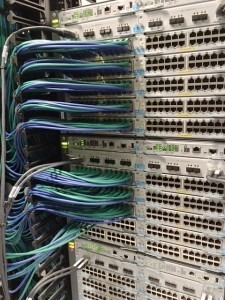Cabling is an essential component of any communication network. After all, phones and computers are now ubiquitous in every home and office. All this technology, however, means more cabling is required than ever before.
When it comes to communication systems, flexibility, simplicity and scalability are three qualities which are highly valued. Giving sufficient attention to your networking solution and investing in structured data cabling in London can certainly help yield these benefits. Integrating structured cabling into your setup, therefore, should be a major priority.

What is Structured Cabling?
Modern organisations are packed full of a myriad of devices that have enhanced productivity and revolutionised the way that business is conducted. The Internet of Things may have reduced the need for cabling to some degree, but the fact remains that cabling is still a major part of any organisation’s communication network. PCs and phones need to be connected to central networks and the only way to achieve this is with cabling. But if all these different devices require unique cabling then things are going to get very complicated. So that’s where structured cabling steps in.
Structured cabling uses twisted pair Ethernet cables to create a uniform environment of connectivity that welcomes both phone and PC networks. The cables in question are most commonly Cat5 or Cat6 Ethernet cables which are already established as the industry standard for data transmission. Both of these cables can be connected to RJ45 sockets which allow PCs and phones to communicate with central data centres and facilitate the flow of information.
Structured cabling uses twisted pair Ethernet cables to create a uniform environment of connectivity that welcomes both phone and PC networks. The cables in question are most commonly Cat5 or Cat6 Ethernet cables which are already established as the industry standard for data transmission. Both of these cables can be connected to RJ45 sockets which allow PCs and phones to communicate with central data centres and facilitate the flow of information.
The Benefits of Structured Cabling
It’s important to understand what structured data cabling is in order to understand how it can be incorporated into your organisation. But it’s also vital that you understand what the benefits of structured cabling can bring your business. Let’s take a look at the key benefits:
- Budget Friendly: The beauty of structured cabling is that it helps you to create a uniform cabling system for your network. One of the main benefits of this uniformity is that it’s incredibly cost effective. Maintenance costs and power are significantly reduced whilst the need for updates is streamlined, so structured cabling can make a real difference to your budgets.
- Flexibility: Multiple wiring systems can present your staff with a major headache for a number of reasons. Dismantling such an array of systems, for example, is very time consuming and makes relocating equipment a technical nightmare. But structured cabling is much more straightforward to dismantle and relocate due to its flexibility to be employed all over you network.
- Scalability: Structured cabling is highly conducive when it comes to scalability. And, again, it’s thanks to its uniformity. New devices can easily be integrated into structured cabling networks as they are all working to one specific standard. Therefore, expansion within your business can be achieved with minimum hassle and ensure that your communication capabilities are maintained.
- Less Downtime: Working with just one cabling system is a sure fire way to minimise mistakes. And that’s why a system built upon structured cabling can enhance your productivity. Identifying faults and rectifying them is much easier and organising your cabling becomes much simpler, so any disruptions to your workflow are minimised.
Structured Cabling Installation
For more information on how to upgrade your structured cabling, or to install your first network, don’t hesitate to get in touch.
Original Source:- Structured Cabling Basics